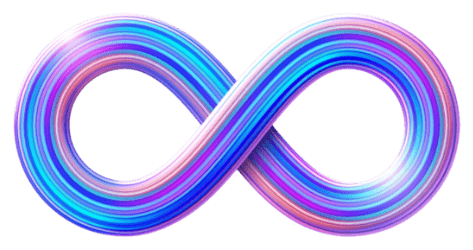now playing:
More
- Fun With DelayLEVEL 4Delay using mostly add9 chords.
- SRV Tips and TricksLEVEL 4Stevie Ray Vaughan's shuffle tricks
- 4 Solo TricksLEVEL 3Secrets to compose an unforgettable Rock/Metal solos
- Double Speed Delay LicksLEVEL 5How to use the delay pedal to double your speed!
- ZZ Top Box of TricksLEVEL 5A collection of bluesy licks in the style of ZZ Top.
- EVH Delay TrickLEVEL 4Short composition based on EVH's delay trick
- SRV Tips And Tricks: 2LEVEL 4Shuffle based tune.
- Delay This WayLEVEL 3How to use the delay pedal in a neo-classical context to create the illusion of fast picking lines à la Nuno Bettencourt.
- One Finger GuitarLEVEL 2Let's explore all possibilities inside simplicity, and try to not block or minds on the guitar learning process!
Feedback
 Frej1027th September 2009
Frej1027th September 2009Cool lesson there Jose !
I want to see more of this !
 kaznie_NL31st July 2009
kaznie_NL31st July 2009Cool stuff, it's good to learn!
 Sensible Jones30th July 2009
Sensible Jones30th July 2009Love this Jose!! Great lesson!!

 Janos Kallai30th July 2009
Janos Kallai30th July 2009Very nice lesson, with great tunes!
 Jose Mena30th July 2009Well done Jose , i like it much
Jose Mena30th July 2009Well done Jose , i like it much
Thanks Sinisa Sinisa Cekic29th July 2009
Sinisa Cekic29th July 2009Well done Jose , i like it much

 Jose Mena26th July 2009
Jose Mena26th July 2009Thanks Ivan and Gerardo
 Gerardo Siere24th July 2009
Gerardo Siere24th July 2009Great job Jose!
 Ivan Milenkovic24th July 2009
Ivan Milenkovic24th July 2009Creative stuff with effects man, great job!

 Jose Mena23rd July 2009
Jose Mena23rd July 2009Thanks guys glad you liked the lesson
I would be really interested in more of those classes.
Actually I wish I had something like this a couple of years ago. It took me quite long and a lot of trial and errors with effects to start producing something useful. But well, I still have a lot to learn. So thanks for the lesson!
I am glad you feel this way, the same here, it took me some time to come up with the delay time to achieve this kind of effect, after I figured out the math I realized it was simple but only after some time of going nuts about it. Gus23rd July 2009
Gus23rd July 2009I would be really interested in more of those classes.
Actually I wish I had something like this a couple of years ago. It took me quite long and a lot of trial and errors with effects to start producing something useful. But well, I still have a lot to learn. So thanks for the lesson! Jerry Arcidiacono22nd July 2009
Jerry Arcidiacono22nd July 2009Very nice lesson Jose.
 Toni Suominen22nd July 2009
Toni Suominen22nd July 2009Very interesting lesson Jose!
 Hisham Al-Sanea21st July 2009
Hisham Al-Sanea21st July 2009good work Jose.
 Jose Mena21st July 2009
Jose Mena21st July 2009Thanks guys
 Vasilije Vukmirovic21st July 2009
Vasilije Vukmirovic21st July 2009Nice!
 Laszlo Boross21st July 2009
Laszlo Boross21st July 2009The delay was a brilliant idea! Nice sounding! Well done!
 Jose Mena21st July 2009Very nice sounding lesson, great job Jose
Jose Mena21st July 2009Very nice sounding lesson, great job Jose
Thanks Zsolt, I love your lessons as wellGreat topic and lesson Jose. Students are gonna love this
Thanks Emir, I hope they do. Emir Hot21st July 2009
Emir Hot21st July 2009Great topic and lesson Jose. Students are gonna love this
 Zsolt Galambos21st July 2009
Zsolt Galambos21st July 2009Very nice sounding lesson, great job Jose

 Jose Mena21st July 2009Beautiful sounding, as well as a great topic Jose!
Jose Mena21st July 2009Beautiful sounding, as well as a great topic Jose!
Once beginners get past the initial stage of finding the right sound setting - I think most will agree that producing really "advanced sounding" stuff is actually quite easy with this technique.
So what are you waiting for?!
I agree Kris, hopefully beginners will find it usefulGreat use of delay! Very interesting topic Jose!
Thanks BogdanI loved it all ! Especially the nice use of fade-in with the volume knob ! Beautifully played
Thanks Alexianden93 that is the violin like sound effect that you can do when using delay like this, it is a cool effect, I think I heard it from Yngwie for the first timeAmazing
Thanks ChokeholdSounds like U2 Jose, well done man
Thank you Pedja, I've been told this sounds like U2 before, I've put it as a tag Good job Jose, smells like U2 indeed!
Good job Jose, smells like U2 indeed!
Thanks Muris. Yes The Edge is a heavy delay user, U2 fans will probably find this lesson interesting. Muris Varajic21st July 2009
Muris Varajic21st July 2009Good job Jose, smells like U2 indeed!

 Pedja Simovic21st July 2009
Pedja Simovic21st July 2009Sounds like U2 Jose, well done man

 Chokehold21st July 2009
Chokehold21st July 2009Amazing

 Alexiaden9321st July 2009
Alexiaden9321st July 2009I loved it all ! Especially the nice use of fade-in with the volume knob ! Beautifully played

 Bogdan Radovic21st July 2009
Bogdan Radovic21st July 2009Great use of delay! Very interesting topic Jose!
 Kristofer Dahl21st July 2009
Kristofer Dahl21st July 2009Beautiful sounding, as well as a great topic Jose!
Once beginners get past the initial stage of finding the right sound setting - I think most will agree that producing really "advanced sounding" stuff is actually quite easy with this technique.
So what are you waiting for?!
- Lesson
- My notes
Hello GMCers
Lately I've seen some interest in the forums about improving the guitar tone. Your guitar tone can be shaped tremendously with the help of effects and eq. I thought it would be cool to do a lesson on using effects, in this case delay and eq.
In this lesson I use 2 different sets of delay and eq setting when I go from rhythm to lead to demonstrate this principle.
The delay and eq settings vary through out the lesson and it will be explained as we go along.
First lets talk about the delay:
One of the coolest effects you can use on guitar is delay, learning how to use it tastefully can improve your guitar sound greatly.
So it is not a matter of simply turning it on and and letting it go, there are many parameters you can tweak to obtain different effects and sounds.
The important ones are:
Delay Time: How much the time the played note will be delayed from the moment you actually played it.
Mix: It is the mix between the delayed sound and the original sound
Feedback: As it names states it, this is the amount of the signal that is fed back to the delay, the more feedback the more repetitions you will get.
In this lesson I will talk about setting these parameters for this particular tune, but this can be applied to different tunes with different tempos.This is a MenO tune called "It's too late" and when I was asked to do the guitars I saw a great opportunity to get creative with effects.
I decided to set the delay so that it fills in between the notes that I play, if you've heard Yngwie Malmsteen's "Black Star" you hear this type of effect at the beginning of the tune, additionally he plays with the volume to create that violin like sound.I have used this same effect for a very short period of time during the solo, and my delay settings for the entire lesson are based on this effect.
You need to set your delay time according to the tempo of the song, to the duration of a dotted 8th note, what will happen is that when you play 8th notes it will sound as if you were playing 16th notes (twice as fast).
On today's effect boxes this is easy to do, most of them let you tap the tempo you want, and then you simply select the delay time to a dotted 8th note, but if you don't have this you might need to do some calculations.
So a little math here helps:Let's say the tempo of the son is 100 bpm, first obtain the duration of a quarter note in milliseconds by dividing 60/100 = 0.6 seconds = 600 ms, now lets obtain the 8th note time duration dividing 600/2 = 300 ms and half of that would be a 16th note = 150ms, so the duration of a dotted 8th note will be 450 ms.
For this kind of effect we want the delayed notes to be played just as loud as the original note so, we set the mix at 50%.
And add some feedback for depth, if not it will sound very dry, I set it around 20%.
Now if you start playing 8th notes at 100bpm, you will here 16th notes because in between the delayed notes will be playing.This is usually done for playing lead lines but here I used it for the rhythm guitar as well, watch the first three videos and listen to the cool effect the delay creates.
Now a little bit about the eq:For the entire lesson I played with the neck pickup, this pickup on my guitar sounds very sweet for lead lines, however I feel it lacks a little brightness when playing rhythm parts, so I heavily changed the eq drastically I gave the treble and presence a boost and cut down the bass a little.
Of course every amp will sound different, and it will also depend on the sound coming out of your guitar. Experiment with it until you obtain the desired sound.
For the solo I go back to the original eq setting which was flat, every knob pointing up so BASS, MID, and TREBLE are at the same level.
I chose this tune for its simplicity, which helps concentrate on the topic rather than learning complicated rhythm patterns or lead lines. For the whole time we will be playing in C Major.
Jump to start: Home or `s` , you can also click/tap the lesson part again (the numbers above player)
Go to next part: PageUP or End.
Volume: ArrowUp / ArrowDown keys
Go to any part: Number keys (combinations also possible)
Pause or play: `k` or space key
Fullscreen: `f`, esc to close
Increase / decrease speed : `+` or `-`







